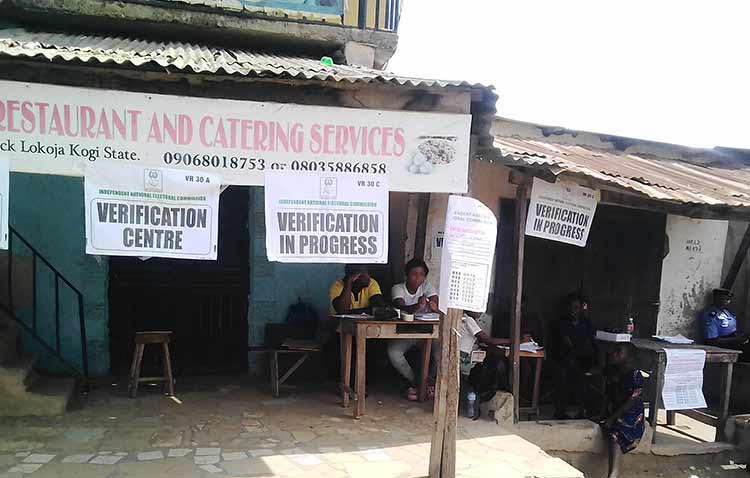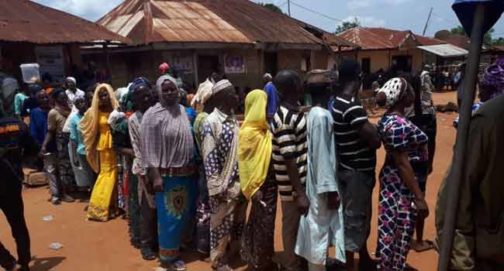The Independent National Electoral Commission (INEC) recently revealed that the petition seeking to recall the senator representing Kogi Central Senatorial District, Natasha Akpoti-Uduaghan, lacks essential contact details necessary for further actions.
Following its regular weekly meeting on Tuesday, the Commission reviewed the petition, which was submitted with six bags of documents reportedly containing signatures from more than half of the 474,554 registered voters in the district.
The petitioners claimed to have gathered support across the 902 polling units in 57 registration areas within Adavi, Ajaokuta, Ogori/Magongo, Okehi, and Okene local government areas.
However, INEC, in a statement, stated that the body observed that the covering letter forwarding the petition did not include a specific contact address, telephone numbers, or email addresses of all the petitioners’ representatives, as required under Clause 1(f) of the Commission’s Regulations and Guidelines for Recall.

The statement added that the given address, listed simply as “Okene, Kogi State,” was deemed insufficient for proper communication, while only the lead petitioner’s phone number was provided instead of those of all representatives.
Sections 69, 110, and 160 of the Constitution of the Federal Republic of Nigeria, 1999 (as amended), along with Sections 2(c) and 113 of the Electoral Act, 2022, empower INEC to issue regulations and guidelines governing the recall of a member of the National Assembly, a State House of Assembly, or an Area Council of the Federal Capital Territory.
INEC’s Regulations and Guidelines for the Recall of a Lawmaker (2024) are divided into four parts, namely: Petition, Verification, Referendum, and Miscellaneous.
1. Petition
Presentation of Petition
The recall process formally begins when petitioners’ representatives submit a petition to the INEC Chairman. The petition must be signed by more than half of the registered voters in the constituency of the lawmaker being recalled.

To ensure proper documentation, the petition must contain the full names, Voter Identification Numbers (VINs), and signatures or thumbprints of each petitioner. These details must be arranged according to polling units in the affected constituency.
Also, a cover letter must accompany the petition, specifying the names, contact addresses, phone numbers, and email addresses of the petitioners’ representatives to facilitate communication with INEC.
Publication of Notice
Upon receiving the petition, INEC must notify the lawmaker in writing and deliver the notice to their official address. The notification is also sent to the presiding officer of the relevant legislative house and published on INEC’s website.
The Commission will then verify whether the petition is signed by more than half of the registered voters. If this condition is met, INEC issues a public notice announcing the date, time, and location for the verification of petitioners’ signatures. However, if the threshold is not met, the INEC will issue a public notice to that effect.
2. Verification
Location for Verification
The verification process takes place at the polling units in the constituency where the lawmaker was elected.
Verification Officers
INEC appoints Verification Officers (VOs) to oversee the verification process, and these officers work under the supervision of an Electoral Officer or an Assistant Electoral Officer. To ensure neutrality, all appointed officers must take an Oath of Neutrality, as required under Section 26 of the Electoral Act, 2022.
Verification Agents
Both the petitioners and the lawmaker facing recall have the right to appoint verification agents who will monitor the process at polling units and collation centres. These agents must be registered voters in the constituency and must submit their names, addresses, passport-sized photographs, and sample signatures to INEC via a dedicated portal at least one week before the verification date.
Verification Procedure
On the scheduled verification day, each petitioner must present their Permanent Voter’s Card (PVC) at their designated polling unit. INEC officers will verify their identity using the Bimodal Voter Accreditation System (BVAS), which authenticates fingerprints or facial recognition. If a petitioner fails BVAS authentication, they will not be counted as verified. Those who pass the verification process will be required to sign or thumbprint against their names in Form EC41 to confirm their participation.
Close of Verification
Once verification concludes, the designated Verification Officer announces the number of verified petitioners, uploads the results to INEC’s Result Viewing Portal (IReV), and submits the original verification records to the Ward Verification Collation Officer.
Collation of Verification Results
At the ward level, polling unit results are compiled into Form EC41B. These results are then consolidated at the local government level into Form EC41C. Finally, the constituency-level collation is completed using Forms EC41D and EC41E. If the total number of verified petitioners exceeds half of the registered voters in the constituency, INEC proceeds to the referendum stage. Otherwise, the recall process is terminated.
ALSO READ: Natasha: Nigerian ‘lawmakers’ whose constituents attempted to recall
3. Referendum
Conduct of Referendum
If the verification process confirms that more than half of registered voters support the recall, INEC must conduct a referendum within 90 days.
Referendum Officers
For a referendum, INEC has a duty of appointing Referendum Officers (ROffs) to manage the referendum, and they are supervised by an Electoral Officer or an Assistant Electoral Officer. Their responsibilities include handling accreditation, voting, collation, and the announcement of results.
Qualification to Vote
Only registered voters who were verified during the recall process are eligible to vote in the referendum.
Voting by Open Secret Ballot
Voting in the referendum follows the open-secret ballot system. Voters mark either “YES” to recall the lawmakers or “NO” to retain them. While the recall exercise has not happened since BVAS’ introduction, the regulations state that INEC must use BVAS to accredit voters before they receive their ballot papers.
Opening of Referendum & Voting Process
Just like the normal voting process, participation in a referendum begins at 8:30 am and ends at 2:30 pm. However, any voter already in the queue by 2:30 pm will still be allowed to vote. Throughout the voting period, ballot boxes must remain in full public view to ensure transparency.
Close of Voting & Collation of Results
At the polling unit level, votes are counted and recorded in Form EC42A before being uploaded to INEC’s Result Viewing Portal (IReV). The results are then collated at the ward level using Form EC42B, consolidated at the local government level in Form EC42C, and finalized at the constituency level using Forms EC42D and EC42E.
If the majority of votes cast support the recall, INEC notifies the relevant legislative house to officially remove the lawmaker. However, if the majority votes against recall, the lawmaker remains in office.
4. Miscellaneous provisions
Relocation of Collation/Declaration Centre
According to the commission’s guidelines, INEC has the authority to relocate collation centres within the affected constituency if necessary, provided that the change does not affect the transparency of the process.
Observers
To ensure transparency, INEC may accredit independent observers to monitor both the verification and referendum processes. Additionally, the absence or refusal of agents to participate does not invalidate the recall proceedings.
ALSO READ TOP STORIES FROM NIGERIAN TRIBUNE








